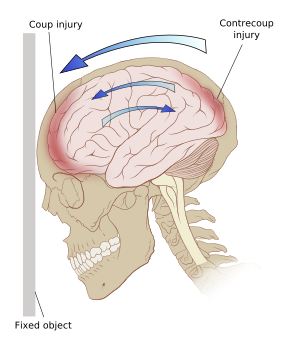
Image via Wikipedia
Your baby is about to operate a deadly weapon, or restated, your teenager is starting to drive an automobile. The maturity level, based on how well your offspring slams a door during a good conversation, may have you a little concerned.
Many dangers exist on the road. According to the CDC, while falls (mainly children between the ages of 0 to 4) is the number one leading cause of traumatic brain injury (TBI), automobile accidents are the leading cause to TBI deaths in America. “The force involved in some TBIs is such that after the initial impact, the brain slams into the skull directly opposite from the site of impact, causing another injury. This is known as a coup-contrecoup injury and can occur even when there are no external signs of trauma like contusions, lacerations, etc.,” according to a Los Angeles brain injury attorney.
A study suggests that the three most common mistakes that lead teens to car accidents are being distracted, miscalculating the risks, and not paying attention to the road. According to the National Highway Traffic Safety Administration (NHTSA) and the Virginia Tech Transportation Institute (VTTI), driver distraction is the leading cause of automobile accidents including cell phone use and reaching for objects. Research also suggests the distracting feature of cell phone use is the conversation, and often drivers conversing with other passengers have an uncontrollable tendency to look away from the road and look at the person they are speaking to.
Now that you are armed with some empirical evidence, talk to your teen about safe driving, even if it results in slamming doors.
